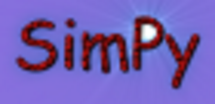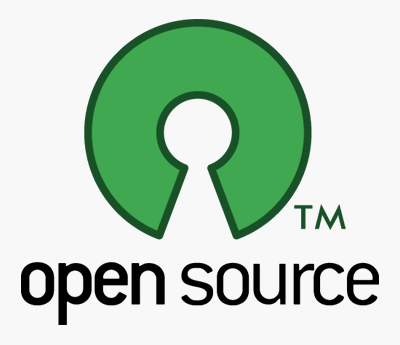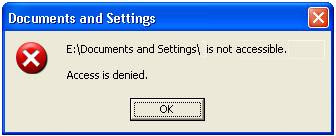This is a list of Free software / open source software packages: computer software licensed under an open source license / Free software license. Software that fits the Free software definition may be more appropriately called free software; the GNU project in particular objects to their works being referred to as open source. However, nearly all software meeting the Open Source Definition also meets The Free Software Definition and vice versa. Some of the softwares that meets either is listed here.
Computer-aided design softwares:Archimedes(CAD):

Archimedes - "The Open CAD" - (aka Arquimedes) is a computer-aided design (CAD) program being developed with direct input from architects and architecture firms. With this design philosophy, the developers hope to create software better suited for architecture than the currently widely used AutoCAD, and other available CAD software. The program is free software released under the GNU General Public License.
AutoQ3D:

AutoQ3D is an OpenGL based software used for 3D modeling. It is written in C++ using Trolltech Qt libraries. It is released under the GNU General Public License, making it free software.
Ayam:

Ayam is a free 3D modelling environment for the RenderMan interface.
AutoREALM:
AutoREALM is an open source program designed to draw maps for role-playing games, mainly in fantasy settings. The program is similar to the commercial Campaign Cartographer.
Computer simulation softwares:SimPy:

It is a queue-theoretic event-based simulator written in Python. It is a process-based, object-oriented discrete-event simulation language.
Blender:

It is a 3D modeling software written in Python and C++ that can make animations and games. It can be used for modeling, UV unwrapping, texturing, rigging, water simulations, skinning, animating, rendering, particle and other simulations, non-linear editing, compositing, and creating interactive 3D applications, including games.
Speech Synthesis/Speech Recognition Softwares:CMU Sphinx:
CMU Sphinx, also called Sphinx in short, is the general term to describe a group of speech recognition systems developed at Carnegie Mellon University. These include a series of speech recognizers (Sphinx 2 - 4) and an acoustic model trainer (SphinxTrain).
Festival Speech Synthesis System:
Festival is a general multi-lingual speech synthesis system originally developed at Centre for Speech Technology Research (CSTR) at the University of Edinburgh.
Flash animation Softwares:Pencil:

Pencil is a 2D graphical animation software that runs on Mac, Windows, Linux and BSD. Pencil uses a unique bitmap/vector drawing interface to produce simple 2D graphics as well as animation. Pencil is written in C++ and is Qt-based. The application license is GNU General Public License.
SWFTools
SWFTools is a suite of software tools to create and manipulate SWF files. SWF is the file format used by Adobe Flash (formerly Macromedia Flash) animation software. SWFTools runs on Windows, Mac OS X, AmigaOS, Linux and several other Unix-like systems. It is distributed under the terms of the GNU General Public License and is thus free software.
Anti-virus Softwares:AVG:

AVG is an umbrella term for a range of anti-virus and internet security software for the Microsoft Windows, Linux, and FreeBSD computing platforms, developed by AVG Technologies, a privately held Czech company formerly known as Grisoft.
ClamAV:

Clam AntiVirus (ClamAV) is a free, cross-platform antivirus software tool-kit capable of detecting many types of malicious software, including viruses. One of its main uses is on mail servers as a server-side email virus scanner. The application was developed for Unix and has third party versions available for AIX, BSD, HP-UX, Linux, Mac OS X, OpenVMS, OSF and Solaris. At one time it had a native version available for Windows, but that project has been ended. Both ClamAV and its updates are made available free of charge.
Media Player Softwares:VLC media player:

VLC media player is an open source, free software media player written by the VideoLAN project. VLC is a portable multimedia player, encoder, and streamer supporting many audio and video codecs and file formats as well as DVDs, VCDs, and various streaming protocols. It is able to stream over networks and to transcode multimedia files and save them into various formats.
VLC used to stand for VideoLAN Client, but that meaning is now deprecated. It is one of the most platform-independent players available, with versions for Microsoft Windows, Mac OS X, Linux, BeOS, Syllable, BSD, MorphOS, Solaris and Sharp Zaurus, and is widely used with over 100 million downloads for version 0.8.6.
Media Player Classic:

Media Player Classic (MPC) is a compact media player for Microsoft Windows. The application mimics the look and feel of the old, light-weight Windows Media Player 6.4 but integrates most options and features found in modern media players. It and its heirs are standard media players in the K-Lite Codec Pack and the Combined Community Codec Pack.
Office Application Softwares:OpenOffice.org:

OpenOffice.org (OO.o or OOo), commonly known as OpenOffice, is an office application suite available for a number of different computer operating systems. It is distributed as free software and written using the gtk toolkit. It supports the ISO/IEC standard OpenDocument Format (ODF) for data interchange as its default file format, as well as Microsoft Office formats among others.
KOffice:

KOffice is a cross-platform office suite for the K Desktop Environment (KDE). All its components are released under free software/open source licenses and use OpenDocument as their native file format when possible.
Go-oo:

Go-oo (previously called ooo-build) is a concentrated set of patches for the cross-platform OpenOffice.org office suite. Go-oo is also one of OpenOffice.org variants created from these patches. It has better support for Office Open XML file formats than the official OpenOffice.org releases produced by Sun Microsystems, and other enhancements that have either not yet been accepted into the upstream Sun version, or will not be because of business or political reasons.
 Though I've already reviewed this site, it's time to review this site again, since consumermate has added new categories like Mobile Phones and LCD Tv's in addition to the Laptop category in the recent past. It has the latest street prices for different products and helps in choosing the product best suited to the consumer’s needs through its buying guide and Ask US sections. And since new categories have been added on consumermate.com, you can get the best deals for Mobile Phones, LCD TV’s as well as laptops. Also a more recent addition to the site is the Online Store Facility with which you can view the prices and buy your favorite products which are available at leading online stores across the country.
Though I've already reviewed this site, it's time to review this site again, since consumermate has added new categories like Mobile Phones and LCD Tv's in addition to the Laptop category in the recent past. It has the latest street prices for different products and helps in choosing the product best suited to the consumer’s needs through its buying guide and Ask US sections. And since new categories have been added on consumermate.com, you can get the best deals for Mobile Phones, LCD TV’s as well as laptops. Also a more recent addition to the site is the Online Store Facility with which you can view the prices and buy your favorite products which are available at leading online stores across the country.


































